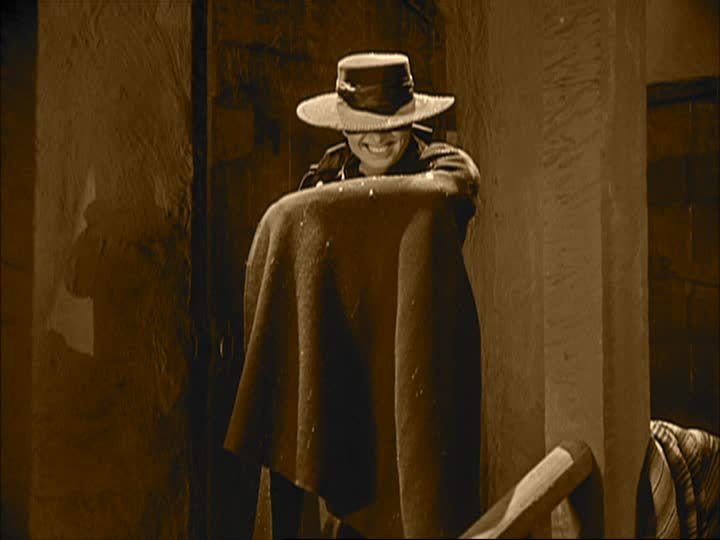The Library of Congress has announced its annual selection of 25 films to be named to the National Film Registry, and we’re proud to announce that three of the films honored have been published by Flicker Alley! The Mark of Zorro (1920), Dream of a Rarebit Fiend (1906), and Black and Tan (1929) have all been beautifully-restored for inclusion in boxed sets.
According to the Library of Congress, the films chosen for the National Film Registry “epitomize the diversity and richness of the nation’s cinematic heritage, have been identified as motion pictures that deserve to be preserved because of their cultural, historic or aesthetic importance.” The three Flicker Alley publications chosen for the 2015 National Film registry certainly represent a diverse sampling of our nation’s early film history, as seen in these descriptions of the films by the Library of Congress:
The Mark of Zorro (1920)
Douglas Fairbanks was gifted not only with a winning smile and athletic prowess, but also with keen insight. Aware that post-World War I audiences had grown weary of the romantic comedies that had made him a star, Fairbanks adapted his persona to create a daring hero and established himself as an icon of American culture. Under the name Elton Thomas, Fairbanks penned the screenplay for his first swashbuckler, portraying Don Diego Vega who has recently returned to California from Spain. Upon finding a despotic governor (George Periolat) persecuting the local inhabitants, he first poses as a preening fop to divert suspicion, then dons a cape and mask to defend the downtrodden armed with a razor-sharp sword and leaving behind his signature “Z” to taunt the evil Captain Ramon (Robert McKim) and his henchmen. The film, directed by Fred Niblo, also stars Marguerite De La Motte and Noah Beery. The Museum of Modern Art Department of Film has preserved the film.
Dream of a Rarebit Fiend (1906)
Based on noted illustrator Winsor McCay’s popular comic strip that ran in the New York Evening Telegram from 1904 to 1914, this short fantasy comedy by film pioneer Edwin S. Porter employed groundbreaking trick photography, including some of the earliest uses of double exposure in American cinema. Porter used camera sleight-of-hand to create the hallucinatory dreams of a top-hatted swell (Jack Brawn) who, after gorging himself on Welsh rarebit, is beset by dancing, spinning furniture and mischievous imps. To create the dream effects, he used a spinning camera and moveable set pieces, along with multiple exposures. Stop-motion and matte paintings added to the film’s whimsical appeal. Porter, who joined Thomas Edison’s company in 1899 and advanced the special effects pioneered by Georges Méliès, completed the seven-minute film in nine days at a cost of $350, which is about $10,000 today. The Museum of Modern Art Department of Film has preserved the film.
Black and Tan (1929)
In one of the first short musical films to showcase African-American jazz musicians, Duke Ellington portrays a struggling musician whose dancer wife (Fredi Washington in her film debut) secures him a gig for his orchestra at the famous Cotton Club where she’s been hired to perform, at a risk to her health. Directed by Dudley Murphy, who earned his reputation with “Ballet mécanique,” which is considered a masterpiece of early experimental filmmaking, the film reflects the cultural, social and artistic explosion of the 1920s that became known as the Harlem Renaissance. Ellington and Washington personify that movement, and Murphy—who also directed registry titles “St. Louis Blues” (1929), another musical short, and the feature “The Emperor Jones” (1933) starring Paul Robeson—cements it in celluloid to inspire future generations. Washington, who appeared with Robeson in “Emperor Jones,” is best known as “Peola” in the 1934 version of “Imitation of Life.”
We’re thrilled that the important contribution these titles have made to film history is being acknowledged and celebrated. “Selecting a film for the National Film Registry recognizes its importance to cinema and America’s cultural and artistic history,” said [Acting Librarian of Congress David] Mao. “The registry is an invaluable way to advance public awareness of the richness, creativity and variety of our nation’s film heritage.” At Flicker Alley, we will continue to make our nation’s film heritage accessible to the public on Blu-ray and DVD, bringing film history to new audiences.
The Mark of Zorro (1920) is part of the adventurous Douglas Fairbanks: A Modern Musketeer DVD collection.
Dream of a Rarebit Fiend (1906) is one of 14 fascinating and innovative films in the Wild and Weird collection.
Black and Tan (1929) is one of 54 rare and restored films in the Saved From The Flames collection.
For more film preservation news, plus exclusive interviews and discounts, subscribe to the Flicker Alley Newsletter.

